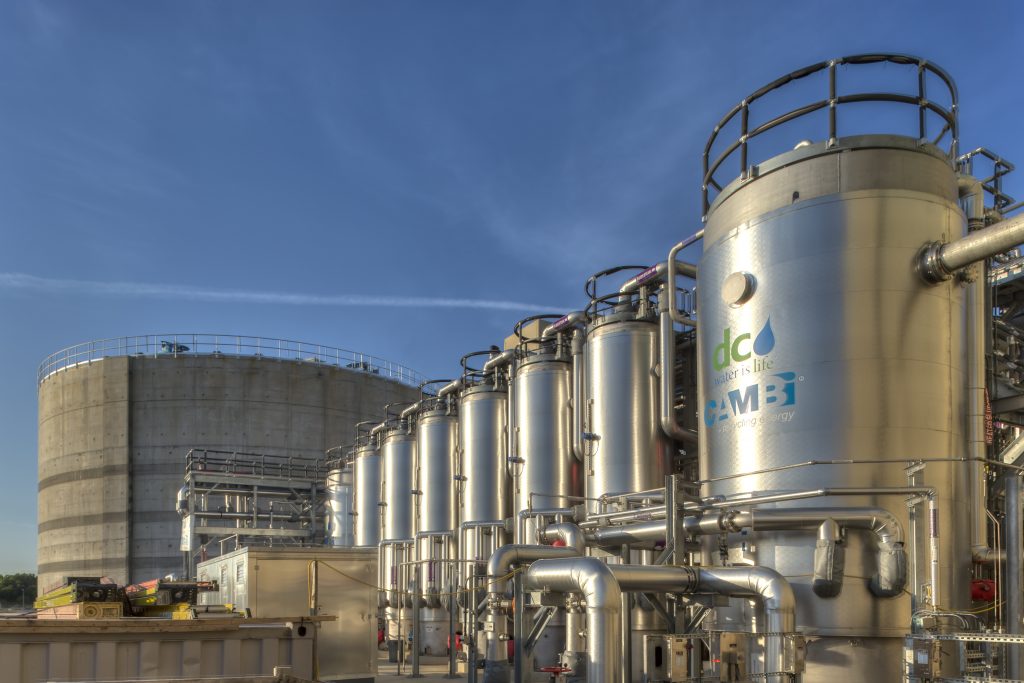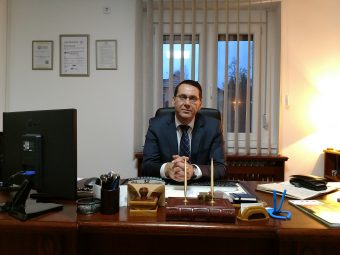
On our path to the European Union, we are bound to adopt a number of laws, among which are regulations related to the treatment of all wastewater and wastewater sludge. Despite the certain opinion which can be heard in our country that the purification of wastewaters isn’t really a necessity, that is backed up by the conviction that a higher concentration of pollution flows into Serbia by the Danube than the one which flows from our country the same way, the projects for the construction of a wastewater treatment systems are in the pipeline. However, sludge remaining after water treatment is escaping the proper attention of the experts and the decision makers. They generally think sludge is a problem that should be somehow dealt with and most often that dealing involves sludge disposal on landfills, which is soon going to be a forbidden technique once we have our laws harmonized with the EU Water Framework Directive. In order to manage this type of problem in a simple way, there is a plan to burn sludge, which is a costly and partial solution. Yet sludge is actually a huge resource if managed in an adequate way.
The technology that allows for a multiple use of water treatment residuals is available in our country through the BBD Group that is representative of the Norwegian company CAMBI, the world leader in the treatment of sludge from wastewater and organic waste. The BBD Group manager Boban Joksic says that capitals such as Washington, Beijing, London, Athens, and Oslo have chosen CAMBI’s sludge treatment plants. Instead of piling up significant costs and thanks to their decision, these cities have been saving money and energy and benefiting from their energy efficient facilities.

– CAMBI has a philosophy: each problem holds a hidden solution. Thus, the enormous amount of sludge that remains after wastewater treatment and whose transport and disposal require huge resources has inspired thinking on how to use it. Existing technologies were simply no longer sufficient. Legal obligations have changed so the directives prohibited the disposal of sludge containing pathogenic organisms. In CAMBI, they have invented a way to use the biological activity of the sludge to the fullest and thus they have come up with a technology known as thermal hydrolysis. This process has enabled obtaining high-quality biogas in the procedure of sludge treatment as well as a significantly better way of use of the residuals for agricultural purposes – explains the director of the BBD Group, stating the fact that the sludge treatment also results in huge savings.
If we know that sludge burning costs an average of 80 to 100 euros per ton and that Belgrade will have it in a raw condition roughly 100,000 tons a year, it is clear that we are not talking about petty savings.
According to estimates, the production of biogas in the process of thermal hydrolysis, which is a pre-treatment to anaerobic digestion, increases up to 30–50%, and the dry remainder whose structure is changed as a result of this process appears to be a first-class fertilizer. For example, in the UK this technology is employed for the treatment of up to 40 percent of the sludge, and that resulted in a new industrial sector.
– After the legislation change, the British authorities set up contracts with companies for the delivery of the fertilizer made in the thermal hydrolysis to farmers and those companies sell it at a price which is a half of the artificial fertilizer’s price. In order to take into account all the possibilities of sludge exploiting, which is still out of our reach, we need to learn a lot about sludge, but first we need to adopt a new approach – says Boban Joksic and informs us that sludge contains a plenty of phosphates and natural phosphorus, and the world is in short of these elements. Using this fertilizer in agriculture, natural nutrients are going back into the soil which becomes ameliorated. The sludge serves as a multivitamin supplement for the soil which was impoverished by nitrogen compounds. It also acts as the best ally in organic production because it doesn’t impede but it stimulates the natural balance necessary for healthy crop farming.
Asked why it is best to use sludge in farming, Boban Joksic claims that the price is the lowest and the level of exploitation is the greatest when we decide to use the remains of wastewater treatment at farms. Any other procedure and an additional process of sludge treatment, starting from disposal at landfills, storage, burning to drying, are considerably more expensive.
– Today we mostly burn and dry sludge in our systems. We took this technology from the Germans who had to process the sludge this way because they had a high concentration of pollutants due to the industrial development. The sludge in our country is not considerably polluted with heavy metals and other pollutants in a way that we would have to burn it. Today, even the Germans tap into some other solutions. On the other hand, they have developed a water purification system by degrees, and we are in a position to skip a few steps – says Boban, pointing out that it is necessary to have knowledge on how to manage sludge just like any other resource. For that matter, one and universal solution doesn’t exist, and it is necessary to come up with a combination of solutions. Since there is a season for fertilization in farming, out of season sludge can be stored and used at urban green spaces, parks, along with the highways, in the forests and elsewhere. In order to be able to use sludge this way it is necessary to adopt a national strategy for the sludge treatment. The drafts were made but we haven’t come a long way.
Prepared by: Tamara Zjacic
You can read the entire text in the tenth issue of the Energy Portal Magazine SUSTAINABLE DEVELOPMENT, in March 2018.
